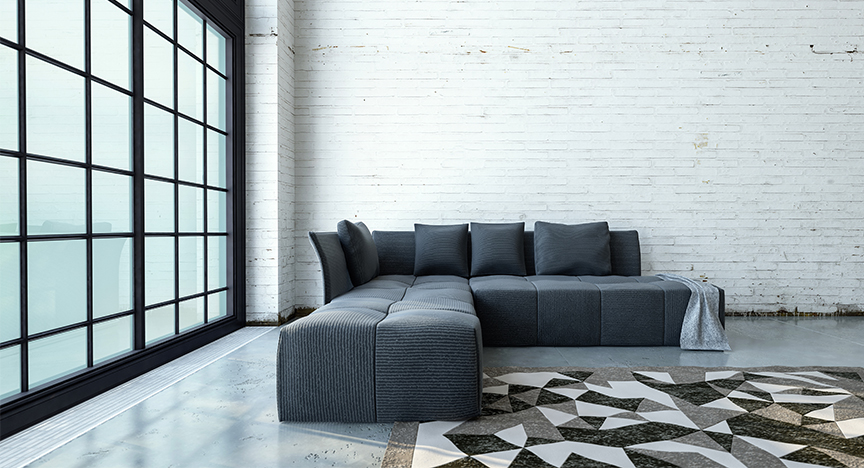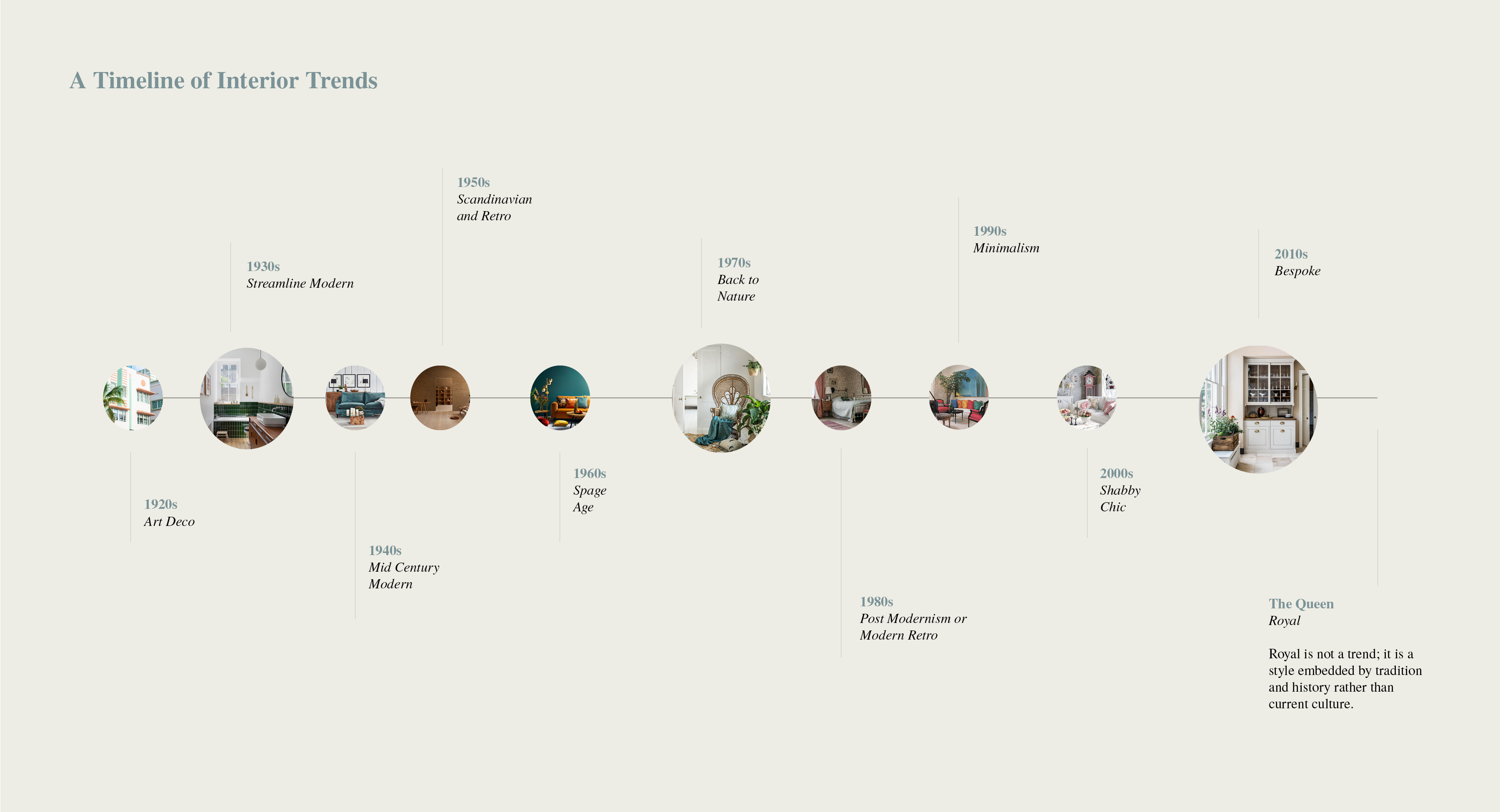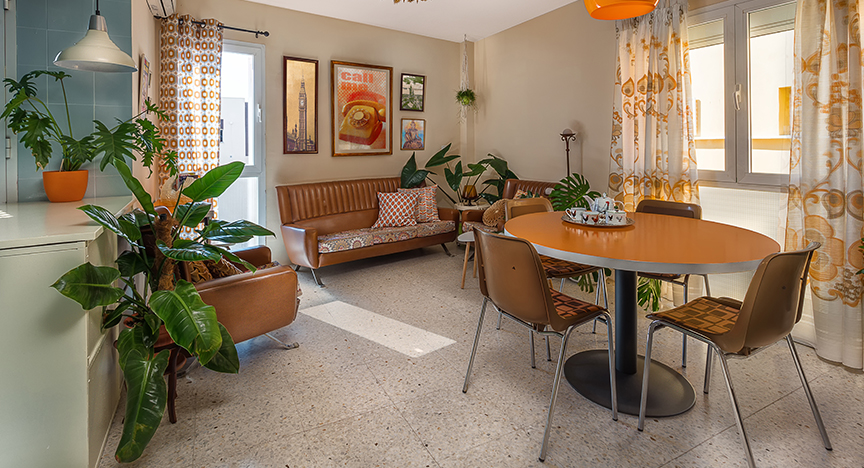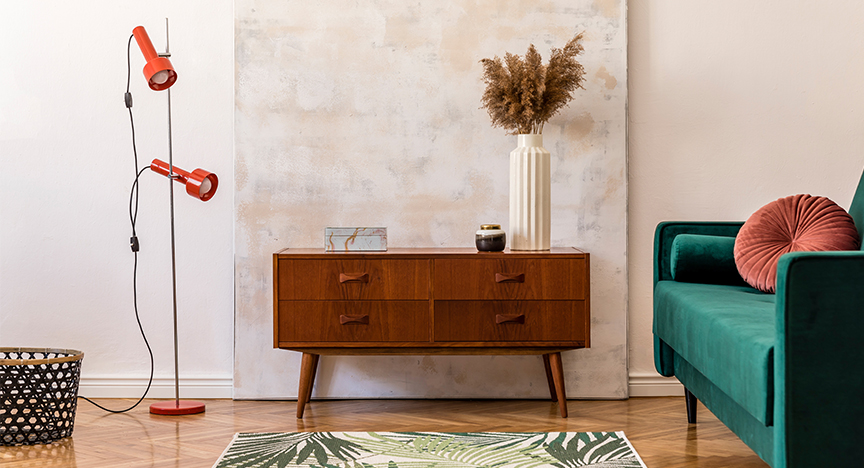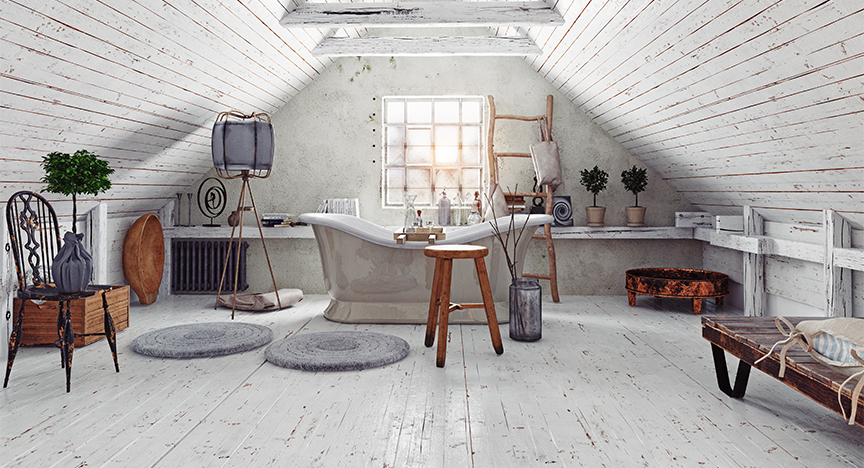Interior design trends did a U-turn in the nineties and simpler living with minimal furnishings and muted colours was preferred. This was the era of Minimalism. The excessive, clashing styles from the eighties grew tiresome and people sought calmness, sophistication, and neutral colour palettes. Whites and magnolias were favourites in home decors paired with knotted pine flooring, furniture and even cabinetry. Curtains were swapped with blinds for a clean, simplistic style and brass fixtures warmed up the homes along with graphical art.
Ikea made its way to the UK market in the late eighties, offering Brits a simple, Scandinavian style for their households at an affordable price. In the early 1990s, Britain was faced with a recession, so the economy was penny-pinching wherever possible and especially in the home. The timing of these stores was the perfect match for the Minimalist movement and cash-strapped families.
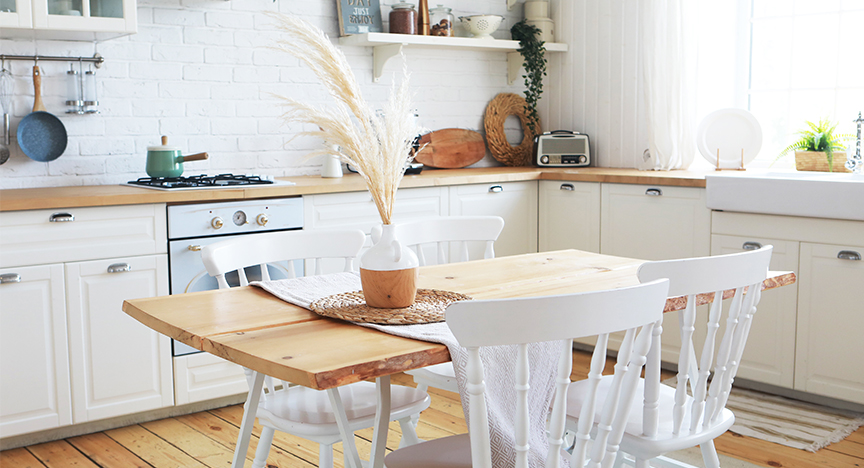
Open spaces and open minds
Minimalism was about creating calm, open spaces, so the furniture was simplified, and decorative items were paired down to declutter the home. Throughout the decade technology found its way into the home which provided people with new entertainment and ways to express themselves in the cyberworld. People felt connected to others without leaving their homes or needing physical belongings.
The tech bubble
The tech industry was booming, the early nineties saw inventions such as the Hubble telescope, the webcam, CD-Rs, the Pentium Processor, Yahoo and the first version of Adobe Photoshop. Towards the end of the decade, Britain and the world was dominated by the tech bubble with the creation of Amazon, eBay, Java programming, Internet Explorer, DVDs, Google, iMacs, Bluetooth 1.0 and the first Blackberry mobile device to name just a few. By 1998, there were over 130 million web users connected across the world and the mobile phone that we cannot live without today was getting more popular, smaller and cheaper.
As the decade loomed to an end worldwide panic was setting in around the year 2000 or Y2K. A widespread computer programming shortcut ‘the millennium bug’ was expected to cause extensive havoc as the year changed over from 1999 to 2000. Governments, especially in the U.S. and UK worked around the clock to address the problem, and as we waved goodbye to the 19th century, everything turned out fine.
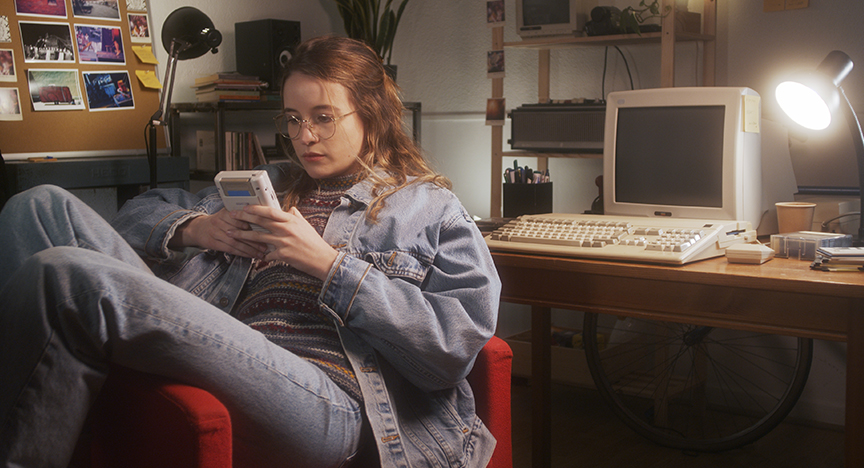
Machines reshaped industries
The term ‘lean manufacturing’ was defined in 1996 and its five principles were published in the book ‘The Machine That Changed the World’ by American authors James Womack, Daniel Jones, and Daniel Roos. This book was a powerful moment in manufacturing history as it highlighted comparisons and contrasts among automobile manufacturers in a five-year study and outlined methods for more efficient assembly of vehicles. Japanese auto manufacturer Toyota was first to try out this new process using a true lean method of production, eliminating substantial waste, increasing quality while reducing time and costs. The authors of the book suggested how these principles could be adapted for traditional mass production of other sectors too and manufacturing was revolutionised across the UK and the world.
A multicultural and multi-faceted society
Britain shifted from a Conservative government to Labour in 1997, with Tony Blair (the youngest PM in over a century) taking the reins. After 18 years of Conservative rule, Labour promised to shake things up to offer a ‘third way’ centrist approach to policy. Their manifesto ‘New Labour, New Life for Britain’ saw the introduction of a minimum wage, increased NHS spending and reduced class sizes.
Change continued outside of the UK, with momentous moments such as after 25 years’ incarceration, Nelson Mandela was freed in South Africa and Hong Kong returned to Chinese control after 150 years of British rule. Britain’s ties to Europe also became closer, literally, with the opening of the Channel Tunnel in 1995 connecting Britain to France by a 23.5 miles undersea tunnel. Two years later in France, the world was shocked by the news of a terrible car crash involving Diana, Princess of Wales, who had tragically died.
This era embraced its growing multicultural society influenced by a plethora of new media channels, digital freedoms and connectedness. Movies like Jurassic Park, Titanic and The Lion King and Braveheart hit the big screen, and Toy Story was the first computer-animated feature film that catapulted children’s viewing into a whole new dimension. Books were selling at an all-time high with J.K Rowling’s release of the first Harry Potter story, gripping teenagers all over the UK with wizardry wonder. Families also sat back to watch other famous families interacting in their homes with big American shows like The Simpsons, Frasier, and Friends.
The age of home comforts
The 1990s interior design trend Minimalism had a strong emphasis on uncluttered, comfortable living, right down to even the bed with the introduction of memory foam mattresses from Tempur in 1991. Life was stable and new forms of entertainment were springing up all around us without needing to leave the house. Yet, thanks to new technologies, people felt more connected than ever. The Minimalism movement evokes calmness and sophistication and continues to be popular in households today, especially show homes.

